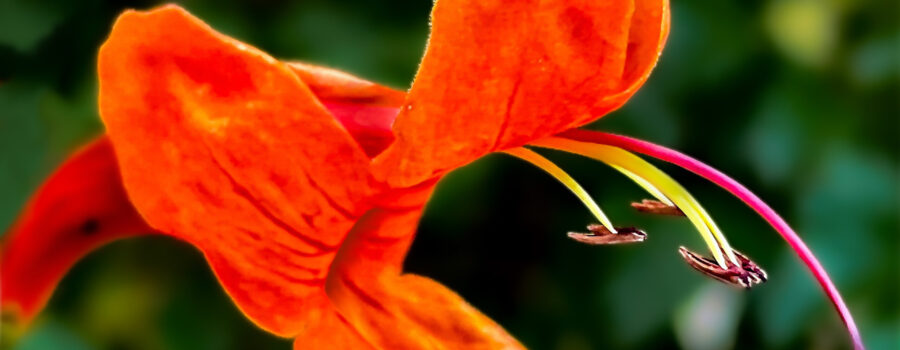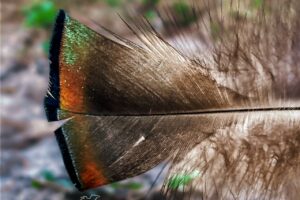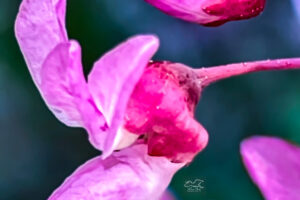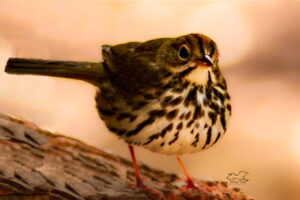Cape Honeysuckle is an Interesting Plant with Beautiful Flowers

When I was out at Watermelon Pond, I found more than one pretty, trumpet shaped flower that was blooming even though it was late in the year. This one was growing along the fence at my friend Mary’s house. Instead of yellow, like the Carolina jessamine, that I wrote about in my last post, this one was a bright reddish orange. The color first drew me in to look at the flowers, but I found those beautiful long stamens and pistil even more attractive. I hadn’t seen this flower before, and Mary wasn’t sure what it was, either since the previous owner had planted it, so I was even more intrigued. I always love learning about new species of any type.
It turns out that this flower belongs to the Cape honeysuckle plant (Tecomaria capensis). Its also commonly known as Cape Tecoma honeysuckle. Interestingly, it is only very distantly related to true honeysuckles. It’s a very popular ornamental shrub, so I’m sure I probably have seen it before, but didn’t pay it lots of attention. It’s native to southern Africa and grows along forest edges in the bush there. It’s also cultivated in many other parts of the world, including here in Florida. Although not considered invasive here in the United States, it is considered invasive in Australia and some of the island nations. It prefers to grow in full to partial sun in fairly moist soil.

The plant itself is pretty interesting. It’s a scrambling shrub, meaning that it will grow both upwards, and by spreading more widely and it will climb things like a vine. It can be trained to climb a trellis or a fence or be used as a taller ground cover. If kept pruned, it can be relatively small, but if let go, it can grow to be up the ten feet tall and nearly as wide. If you don’t want a large plant, you can also grow it in a pot and keep it pruned. It’s known to be salt tolerant and pretty cold tolerant (although it can die back in the colder weather). The other really cool thing about this plant is that in tropical and subtropical climates, it will actually flower all year long. How cool is that!?! The flowers can be red, reddish orange, orange, or yellow depending on the serovar of the plant, and they are great at attracting bees, wasps, butterflies, and hummingbirds. There are also some types of hawks moth larvae that use them as a food source.
I can completely understand why this shrub is so popular with gardeners and landscapers. If it’s gorgeous flowers and it’s versatility weren’t enough, these plants are also very hearty and are not predisposed to diseases or fungal infections. And on top of that it attracts some really cool wildlife. I’d say this one is definitely a win-win.





Recent Comments